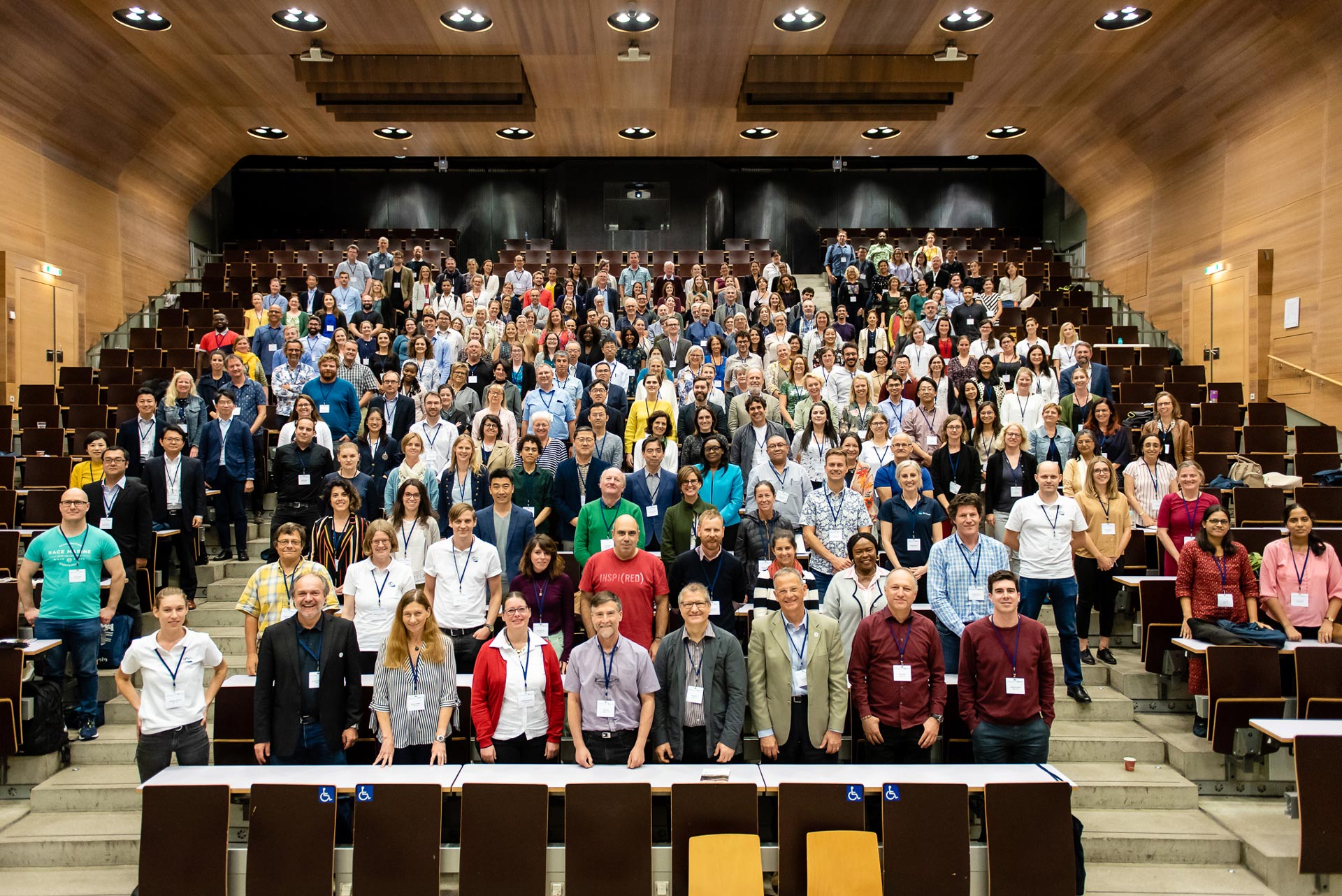The deadline of abstract submission is November 15, 2022. Please find details of this symposium from the following link:
International Water Association, Specialist Group

International Water Association, Specialist Group
The deadline of abstract submission is November 15, 2022. Please find details of this symposium from the following link:
Water Research, Volume 223, 1 September 2022, 118985.
Shu-Yu Hsu, Mohamed Bayati, Chenhui Li, Hsin-Yeh Hsieh, Anthony Belenchia, Jessica Klutts, Sally A. Zemmer, Melissa Reynolds, Elizabeth Semkiw, Hwei-Yiing Johnson, Trevor Foley, Chris G. Wieberg, Jeff Wenzel, Marc C. Johnson, Chung-Ho Lin
https://www.sciencedirect.com/science/article/pii/S0043135422009320
Water Research, Volume 223, 1 September 2022, 118970.
Mike Cyterski, Orin C. Shanks, Pauline Wanjugi, Brian McMinn, Asja Korajkic, Kevin Oshima, Rich Haugland
https://www.sciencedirect.com/science/article/pii/S0043135422009174
Water Research, Volume 223, 1 September 2022, 118904.
Wei Lin Lee, Xiaoqiong Gu, Federica Armas, Mats Leifels, Fuqing Wu, Franciscus Chandra, Feng Jun Desmond Chua, Ayesa Syenina, Hongjie Chen, Dan Cheng, Eng Eong Ooi, Stefan Wuertz, Eric J Alm, Janelle Thompson
https://www.sciencedirect.com/science/article/pii/S004313542200851X
Global Water Pathogen Project
Newsletter Vol. 8, Issue 10
September 12, 2022
https://mailchi.mp/dee8131c9c79/gwpp-newsletter-in-memorial-to-dr-duncan-mara?e=e1e2204839
Monitoring the exposure and emissions of antibiotic resistance: Co-occurrence of antibiotics and resistance genes in wastewater treatment plants
Ruud Steenbeek; Peer H. A. Timmers; Danielle van der Linde; Kay Hup; Luc Hornstra; Frederic Been
J Water Health (2022) 20 (8): 1157–1170.
Evaluate the effectiveness technology for the treatment of oily wastewater
Meshari Almutairi
J Water Health (2022) 20 (8): 1171–1187.
CFDA-AM staining to assess the metabolic activity of Giardia duodenalis cysts inactivated by chlorine, boiling and ultraviolet irradiation
Maria Júlia Rodrigues da Cunha; Bárbara Luíza Souza Freitas; Natália de Melo Nasser Fava; Lyda Patricia Sabogal-Paz
J Water Health (2022) 20 (8): 1188–1196.
Modeling infection from SARS-CoV-2 wastewater concentrations: promise, limitations, and future directions
Jeffrey Soller; Wiley Jennings; Mary Schoen; Alexandria Boehm; Krista Wigginton; Raul Gonzalez; Katherine E. Graham; Graham McBride; Amy Kirby; Mia Mattioli
J Water Health (2022) 20 (8): 1197–1211.
The first detection of SARS-CoV-2 RNA in urban wastewater in Giza, Egypt
Mohamed N. F. Shaheen; Elmahdy M. Elmahdy; Yasser E. Shahein
J Water Health (2022) 20 (8): 1212–1222.
Effectiveness of environmental surveillance of SARS-CoV-2 as an early warning system during the first year of the COVID-19 pandemic: a systematic review
Susanne Hyllestad; Mette Myrmel; Jose Antonio Baz Lomba; Fredrik Jordhøy; Svanhild Kjørsvik Schipper; Ettore Amato
J Water Health (2022) 20 (8): 1223–1242.
Assessment of microplastic contamination in the urban lower Chao Phraya River of Bangkok city, Thailand
Khattiya Ounjai; Suwanna Kitpati Boontanon; Pitchaya Piyaviriyakul; Shuhei Tanaka; Shigeo Fujii
J Water Health (2022) 20 (8): 1243–1254.
Endocrine-disruptor endpoints in the ovary and thyroid of adult female rats exposed to realistic doses of di-(2-ethylhexyl) phthalate
Amel Jebara; Asma Beltifa; Guissepa Di Bella; Lotfi Mabrouk; Hedi Ben Mansour
J Water Health (2022) 20 (8): 1256–1267.
We will have an Open Meeting of HRWM SG at IWA WWC Copenhagen as follow:
September 15, Thursday
10:30 – 12:00
ROOM: 19
Our open meeting will provide an update on our group activities, e.g., our Mini-Symposium Webinar Series, projects, and other initiatives. The members of the MT will update you on the planning of the 21st HRWM Symposium in Darwin in June 2023. Moreover, we will discuss the coming election of the Management Committee. This meeting will be a good opportunity for members to provide their input as we discuss future activities for the group. We are also actively looking for new members, especially from the YWP. Everyone interested in the field of health-related water microbiology will be warmly welcomed to attend the meeting.
Water Research, Volume 222, 15 August 2022, 118913.
Subba Rao Chaganti, Claire Plouff, Mohammad Madani, Abdolrazagh Hashemi Shahraki, Adrian A. Vasquez, Rajesh Seth, Daniel D. Heath, Jeffrey L. Ram
https://www.sciencedirect.com/science/article/pii/S0043135422008600
Water Research, Volume 222, 15 August 2022, 118893.
Chen Cai, Xiangfeng Huang, Xiaohu Dai
https://www.sciencedirect.com/science/article/pii/S0043135422008405
Water Research, Volume 222, 15 August 2022, 118897.
Timothy J. Y. Lim, Robert Sargent, Rebekah Henry, Tim D. Fletcher, Rhys A. Coleman, David T. McCarthy, Anna Lintern
https://www.sciencedirect.com/science/article/pii/S0043135422008442
Water Research, Volume 222, 15 August 2022, 118879.
Jacopo Foschi, Giulio Francesco Bianchi, Andrea Turolla, Manuela Antonelli
https://www.sciencedirect.com/science/article/pii/S0043135422008260
Water Research, Volume 222, 15 August 2022, 118900.
K. H. Cheng, Jiu Jimmy Jiao, Xin Luo, Shengchao Yu
https://www.sciencedirect.com/science/article/pii/S0043135422008478
Water Research, Volume 222, 15 August 2022, 118841.
Jun Yang, Jinyi Xiang, Yu Xie, Kaifeng Yu, Karina Yew-Hoong Gin, Bo Zhang, Yiliang He
https://www.sciencedirect.com/science/article/pii/S0043135422007904
Water Research, Volume 222, 15 August 2022, 118853.
Julian Damashek, Jason R. Westrich, Jacob M. Bateman McDonald, Morgan E. Teachey, Charlene R. Jackson, Jonathan G. Frye, Erin K. Lipp, Krista A. Cappse, Elizabeth A. Ottesen
https://www.sciencedirect.com/science/article/pii/S0043135422008004
Water Research, Volume 222, 15 August 2022, 118862.
Chengshi Ding, Zheng Gong, Kai Zhang, Wanxiang Jiang, Meiling Kang, Zhongjing Tian, Yingxia Zhang, Yanping Li, Jing Ma, Yang Yang, Zhigang Qiu
https://www.sciencedirect.com/science/article/pii/S0043135422008090
Recent Comments